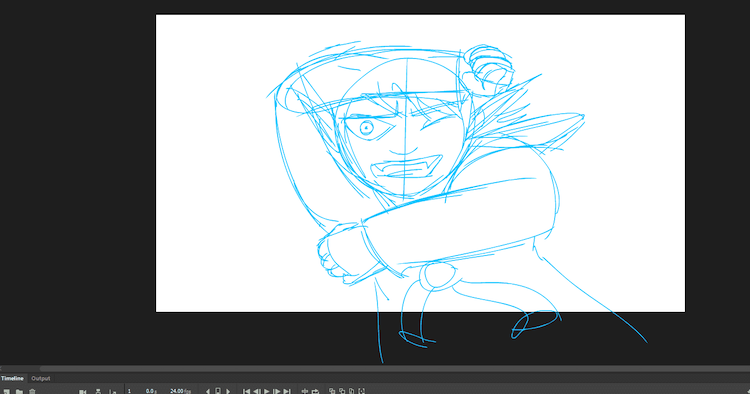Animation Pipeline Definition
The Animation Pipeline is the detailed plan and process of taking an animation project from start to finish. The three pieces that make up the entire animation pipeline are pre-production, production, and post-production.
Pre-Production
Pre-Production is everything that comes before the actual animation. There is a lot that goes into planning an animation, and all of that happens during this phase.
Story
The very first step in an animation project is coming up with an idea and a full story.
Character Design
With a general idea of the story, it's time to come up with the characters. (The order of Character Design and Story can also be swapped or done together.) Learn more about the fundamentals of character design.

Art Direction & Design
Art Direction and Design involves all of the concepts needing to be created for specific scenes, backgrounds, props, and more. This is where the overall look and art direction of a project is determined, including the style and colors used throughout.
Storyboarding
Storyboarding can happen once there is an idea for a story. This can start during the Art Direction & Design step, but usually the final boards will come once everything has been figured out.
Animatic & Sound
Once the storyboards are done, they are put together in an animatic. Music, voice, and sound effects are added at this stage to make sure that the timing is solid.
Production
Production is the actual animating portion, and for something like an animated short film, it can take place in Adobe Animate.
Rough Animation
All animations start with rough animation. This is where the rough shapes are put down, and the timing of character movements is planned out. Depending on how on-model the drawings are, there may need to be multiple passes at the rough animation stage.

Clean-up Animation
After rough animations, it's time for the the clean-up stage, and what used to be known as "ink and paint" during traditional animation.
The inking is where a new layer is created and characters are drawn in clean, closed lines, and are on-model. From there, color palettes are used to keep character colors consistent as they are filled in.
Read More: How to Draw From Reference
Post-Production
Post-Production happens after all of the animating is complete. This is splicing video files together, making final tweaks, and exporting the final animation as a video file.
Compositing & Exporting
If multiple project files were created for different scenes, each will need to be exported individually. They are then loaded into a new file in the correct order, and exported as a full video.

In the end, the animation pipeline includes many different jobs and responsibilities when taking a story from start to finish.
Questions? Want to learn more? Check out our animation classes for kids and teens to get your child started today.
